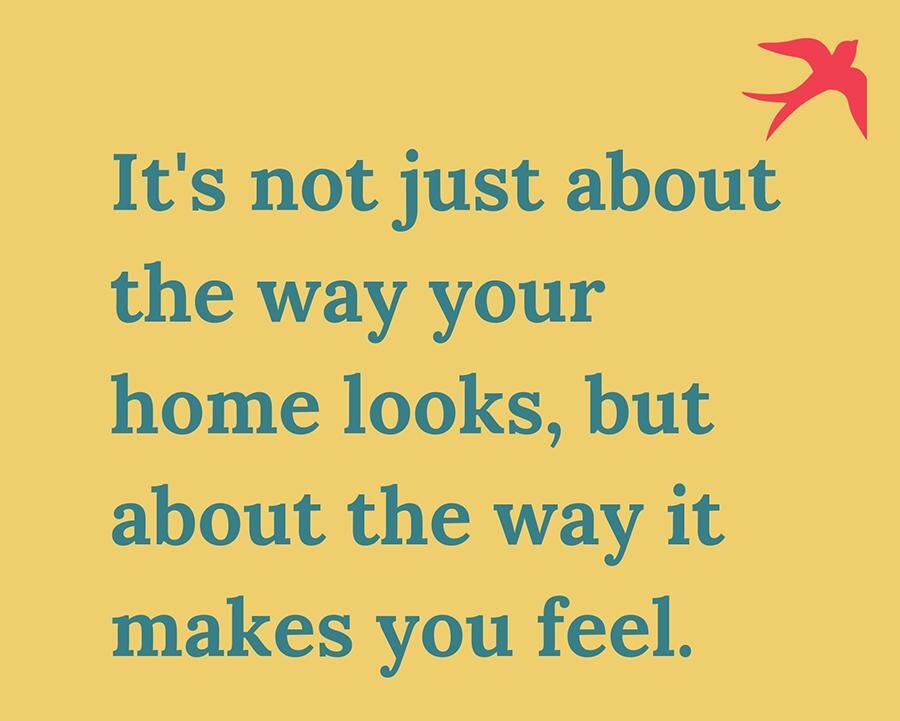How to find your style and create a happy home
Do you struggle to know what your style is and what colours to put together when creating a colour scheme?
Putting the time in to find your own style will help you make considered decisions; it will give you a thread to follow, which should, in turn, mean less upset, less waste and fewer mistakes.
Your interior style doesn't need to be rigid. Think about it as developing a style that can evolve and become a reflection of you and your lifestyle. Style is visual but also based on core values and feelings that are important to you.
Research can sometimes lead to confusion. I find my clients often feel overwhelmed with the many influences we have around us, becoming worried about trying to be as perfect as in the magazine pictures. Keep it simple and work through your ideas in sections.
Here are a few simple guidelines to follow:
How do you and your family live - take into account your lifestyle
Aspiration versus reality - What is an idea and what really is achievable
What period property do you live in - Can you build on any existing style features
Research interior styles - look at buying interior books and magazines for in-depth knowledge
Define a core colour palette thinking about accent colours - colour grouping according to room uses, size and lighting
It's not just about the paint and wallpaper - texture and pattern need to be included
Furniture - Provenance and craftsmanship - buying with integrity, pieces with memories or items that can be repurposed.
Influence is natural and it's inevitable that our styles merge and change over time in our homes. Try to have a balance between fun and practicality, can you live with it long term.
Create a mind map of your lifestyle and what's important to be included in your style reference.
Below is my mind map of style influences.
Inspiration
Get inspired by magazines, tear out pages you like and start to recognise why you like them, group colours and styles. Research places you've been to and liked maybe the interior style from a house in a movie that you remember fondly. Look back to previous holidays, vistas and colours you loved. Pinterest is a great tool to use, type in names and keywords of places, hotels or restaurants and begin to make create style boards.
This image below shows my created boards on Pinterest.
Colour
When choosing a group of core colours, consider the use of the room, what ambience is required. It's not just choosing paints and wallpaper it's also all the accent colours and the lighting at different times of the day. Too many colours can cause chaos but too little can be uninspiring and flat.
Find a balance and think about how different colours make you feel, give yourself the creative freedom to recognise any emotions linked with certain colours that you would want to include in your home style. Choose colours that will stand the test of time, not just a fashion, you can bring those colours in furnishing accents.
Furniture and Craftsmanship
Craftsmanship is at last appreciated so much more than in recent years, I think everyone is starting to realise we need to buy less and buy skillfully made items from a sustainable source.
Look at the flow of your home, how the furniture you have sits with each other. Mixing styles and colour palettes are fine if you can add connecting accents. Include buying second-hand furniture that can be repurposed giving longevity to what's already been made.
When choosing a style of furniture take into consideration the shape, materials and design characteristics. Choose items that may need budgeting for but will last longer, quality over quantity.
Memories and inheritance
An important part of your style should include pieces that mean something to you, have a memory or a history that shows your personality. Even if it means mixing styles you can find ways to incorporate them and build into your story.
Natural and nature
Including natural materials as part of your style is an important part of giving depth and helps to bring nature into your home life. Nature in the form of plants, flowers and in prints of fabrics and wallpapers really tie up for me the whole creative process in forming your style.
The colours in the image below show how you can find a family of colours that work well together, finding tones and shades that you like.
The next part of the process is to create a mood board that visually shows you all the aspects of your style to keep for future guidance in all your interior design schemes. Include important words from your mind map, the torn out magazine images, print outs, fabrics and any artefacts that you want to include.
This process should be fun and enlightening; you may also learn a few aspects of your personality that you hadn't noticed before. Style is personal; it's something that grows from knowledge, but most of all, it comes from taking a few considered risks.
I have a new online course to help you on your interior journey; click the link for more information.








